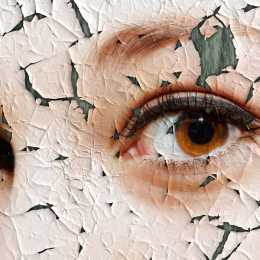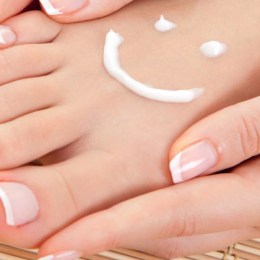The Skinimalism trend, defined by emphasising simplified routines and a more intentional approach to skincare is gaining traction with consumers. However, how are aesthetic clinics responding? Kelly McChord breaks down her approach to this trend.
More than just a passing social media movement, Skinimalism encourages patients to strip back multi-step routines in favour of targeted, results-driven solutions that prioritise skin health over perfection. For clinics, it’s an opportunity to align treatment plans with evolving consumer values, especially among those seeking minimal downtime and maximum impact.
According to Nurse Practitioner Kelly McChord of The Glasgow Skin Clinic (pictured), Skinimalism is increasingly shaping how clients engage with both at-home care and in-clinic services.
This doesn’t mean aesthetics professionals are doing less, it means they’re doing things more intentionally. For Kelly, this involves refining consultation processes to identify exactly what the skin needs, rather than defaulting to multi-layered regimens.
Are you seeing a shift towards Skinimalism among your clients, and how is it influencing the way you approach skin treatments?
Skinimalism might be a hard word to say but it can make our clients lives easier. It focuses on simplifying routines to prioritise effectiveness over excess and focus on using quality products specific to skin needs.
Compliance with products is often assumed and not discussed with clients. When we probe clients, they often admit they don’t use their full range of skin care at home.
Minimising their skin care routine means that clients spend money wisely, on active ingredients, that will give good clinical outcomes rather than an array of products where there is little observed effect. It is not only more cost-effective but environmentally friendly too.
In our clinic, we are changing towards introducing ‘elimination diets for skin care’. This begins by asking which products they do use and prefer. We then use our expertise to ensure these are appropriate for their skin.
We are moving towards a culture where skin quality is highly desired. By saving money on skin care, working smarter to achieve skin goals, we can still prepare skin adequately for more effective skin treatments in clinic.
In an aesthetic setting, how do you balance minimalism with clients’ desires for corrective or rejuvenating results?
Skinimalism means that clients have more expenditure for cosmetic, laser and injectable treatments but their skin is still adequately prepared. Minimalism ensures that the correct products are individualised to the client’s skin concern. The correct active ingredients are crucial. For example, salicylic acid for acne prone skin or azelaic acid for rosacea.
In a climate of social media influencing, many clients are coerced into buying heavily marketed products that will have little to no effect on their skin. These are often poorly formulated with little clinical evidence. Yet, clients believe the hype. Education regarding skinimalism will help bridge the gap between novelty and science.

I talk about an analogy of rebuilding the forest with our skin. We can’t just import plastic trees (BONT-A). We have to plant seeds (bio-stimulate), fertilise (bio-remodel), nourish (HA) and hydrate (topicals). But that includes planting the right seeds, at the right time, by the right person. Let’s keep it simple, make our clients trust us, as dermal clinicians and health professionals, and guide them towards striving for the best skin results with minimal intervention.
Do you believe a simplified routine can still achieve strong clinical outcomes for skin health?
I believe that the key to good skin should not be complex. Ensuring consistency and appropriate products and treatments to target the right skin concerns is pivotal. Good skin is universally agreed as a sign of beauty, health and attractiveness.
In today’s society, women (and men) are often time poor. Without prejudice, women in their 20’s may be studying or working towards career goals, women in their 30’s may have young children or family commitments, and women in the 40+ age bracket may be pre-menopausal, peri-menopausal or post-menopausal.
Neither of these demographics want to spend a lot of time, at night or early morning, with complicated regimens. In addition, typically, men do not use much skin care therefore may be overwhelmed with anything that’s not straightforward.
Education regarding using a simplified, streamlined routine is attractive to many of our client demographic. They now trust that skin care should not be a financial burden. We also use Clinical Imaging Systems to capture and monitor progress, ensuring accountability and accurately measuring skin outcomes.
What types of treatments or skincare products do you recommend for clients wanting to embrace a ‘less is more’ philosophy?
We are all embracing more natural outcomes in aesthetic medicine and cosmetic dermatology. If I was to choose one product for every client, it would be broad spectrum photo protection because daily sun exposure in Australia and New Zealand is often unavoidable. Many preparations now include antioxidants and can be moisturising, with tinted formulations available. I also clients to use one active ingredient at a time to build up a tolerance.
For example, a Vitamin C serum in morning then gradually introduce a form of Vitamin A product at night (tretinoin, retinoid, retinol). This also improves affordability and avoids big purges or sensitivity where we don’t know which product is the causative agent. I also recommend Niacinamide (Vitamin B3) which is versatile, well-tolerated and teams well with many other products.
Skin needling is my favourite, and a gold standard treatment to suit all skin types. We can also add exosomes, epidermal growth factors, coenzymes, minerals and hyaluronic acid to improve outcomes and recovery. In addition, we may incorporate Platelet Rich Plasma (PRP) or other advanced cosmetic skin technologies, which have reshaped client expectations and treatment goals. The focus has shifted toward regeneration over simply ‘anti-ageing’, with a growing preference for subtle, natural-looking results, where less is truly more.
Read our latest issue below:
There are 5 ways you can catch up with SPA+CLINIC
- Our quarterly print magazine, delivered to your door. Subscribe here.
- Our website, which is updated daily with its own completely unique content and breaking news.
- Our weekly newsletter – free to your inbox! Subscribe here.
- Our digital magazine – click here to view previous issues.
- Our social media – see daily updates on our Instagram, Facebook & Linkedin




